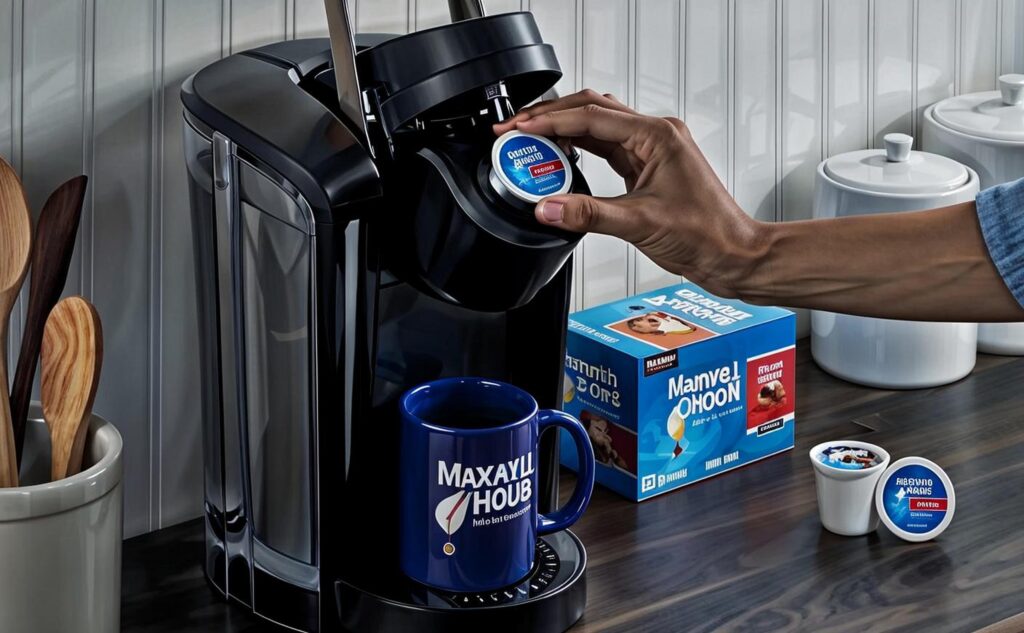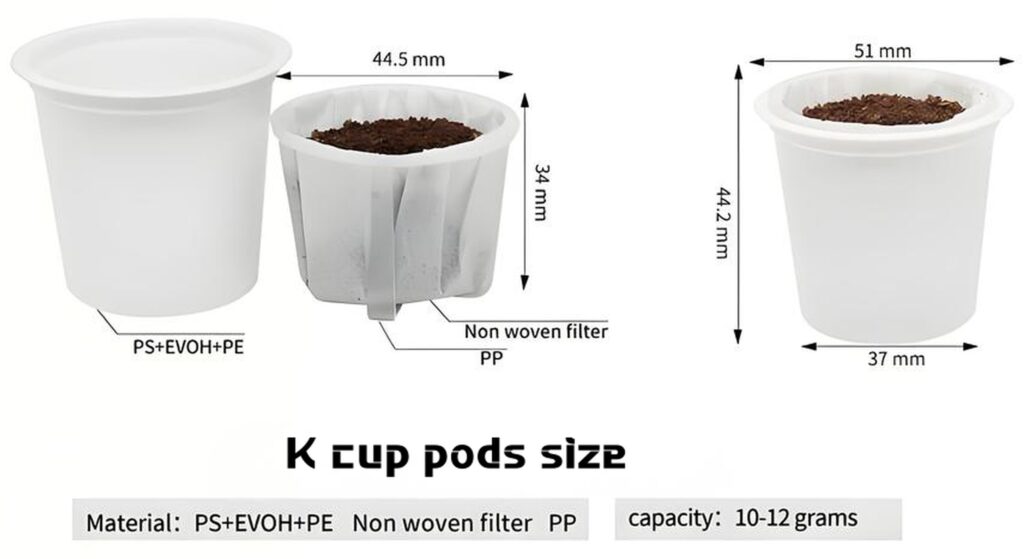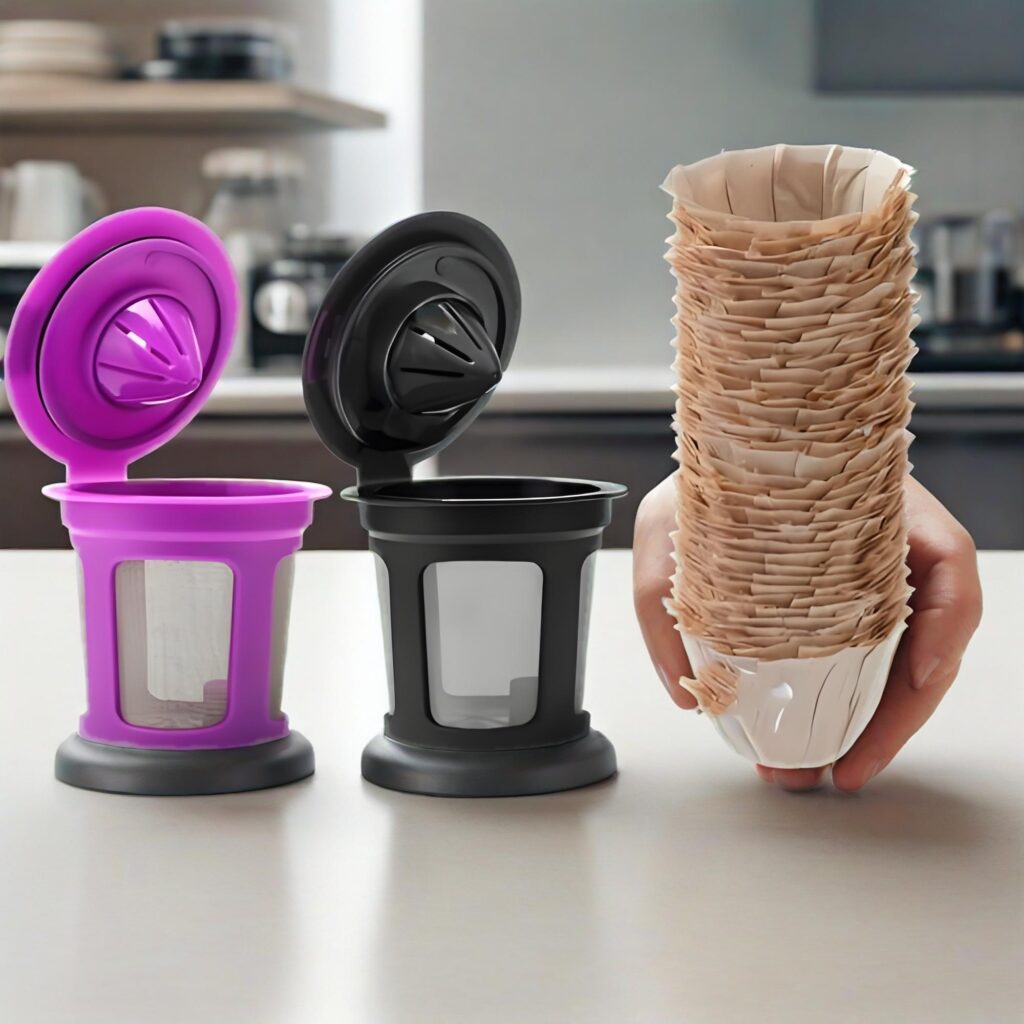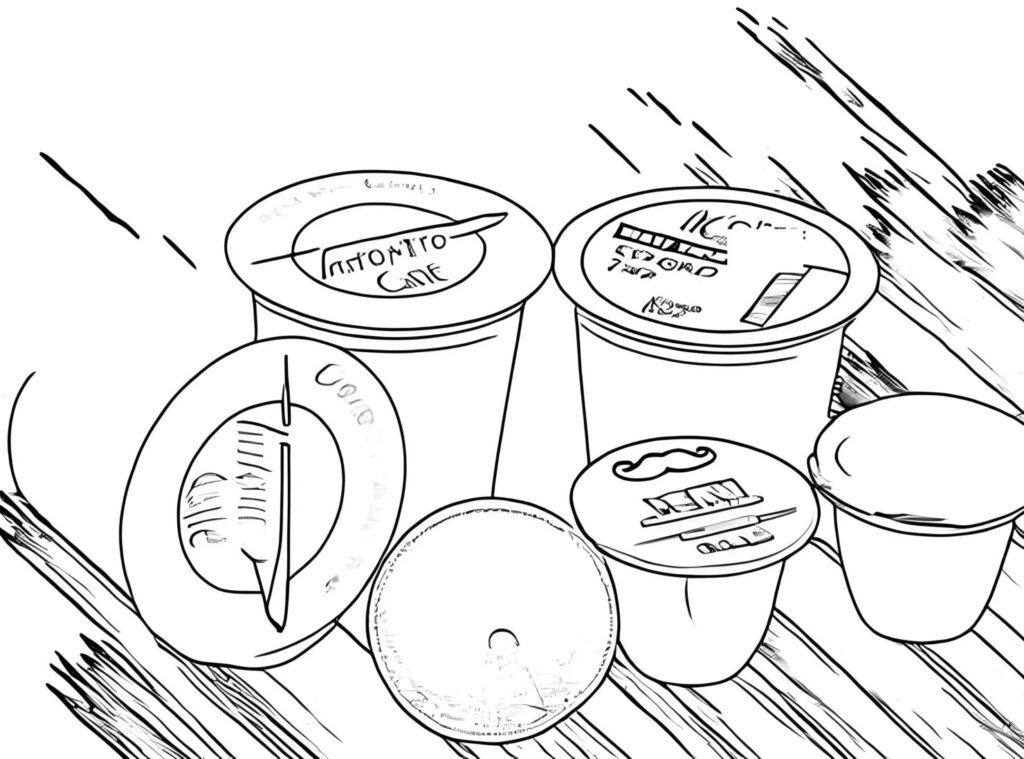Using K-Cup pods for your coffee is super convenient, right? But looking at the price per cup makes you wonder why they cost so much more than regular ground coffee.
K-Cup pods are expensive because you're paying for more than just coffee. The cost includes the complex multi-layer packaging, the pre-measured coffee portion, the intricate manufacturing process involving specialized machinery, plus the sheer convenience they offer.

The higher price tag isn't arbitrary; it reflects several factors from materials to manufacturing. To really understand if the cost is justified for you, we need to look closer at what goes into making that single-serving pod. Let's start by defining what a K-pod actually is.
What Exactly Are K-Pods and Their Sizes?
Heard the term K-pod or K-Cup, but not sure what defines them? It seems simple, but the specific design impacts cost and function. Let's get clear on the basics.
K-pods, more commonly known as K-Cups, are single-serving coffee capsules designed for Keurig brewing systems. They have a standard size, typically 51mm in diameter, holding about 8 to 13 grams of coffee grounds.

So, when we talk about K-pods or K-Cups (the terms are often used interchangeably, though K-Cup is the official brand name for Keurig's pods), we're talking about a specific format. This standardization (Insight 1) is key – it ensures compatibility across different Keurig machines. Inside that standard size, however, lies a surprisingly complex little package. It's not just a simple plastic cup.
The typical K-Cup consists of several components (Insight 2):
- The Cup: This isn't just any plastic. It's often a 7-layer co-extruded plastic shell. Why so complex? These layers create a high barrier against oxygen, moisture, and light, keeping the coffee inside fresh for a long time. This specialized plastic costs more than a simple container. An empty cup shell, even with the filter pre-installed, might cost around $0.05 just for the materials and basic forming.
Precision-engineered #7 composite plastic (FDA 21 CFR 177.1520 compliant) costs $2.42/lb in 2024 - that's 3.6x standard coffee bag material, accounting for 38% of each pod's price
- The Filter: Inside the cup, there's usually a filter, often made of non-woven fabric or paper. This holds the coffee grounds while allowing water to flow through evenly during brewing. It needs to be precisely welded or attached inside the cup.
- The Coffee: Between 8 and 13 grams of ground coffee fill the pod. The cost here varies hugely depending on the type and quality of the beans used.
- The Lid: An aluminum foil lid is heat-sealed onto the top rim of the plastic cup. This provides the final airtight seal. The foil itself might cost around $0.01 per piece.
So, even before adding the coffee, the specialized empty packaging components contribute significantly to the pod's base cost. Add the coffee, manufacturing, and branding, and the price climbs further. While the size is standard, the internal construction is engineered for freshness and brewing performance, driving up the cost compared to a simple bag of coffee.
How Many Times Can K-Cup Pods Be Used?
Looking at the cost, you might wonder if you can reuse K-Cups. Getting more than one brew seems like an easy way to save money, right?
Standard K-Cup pods are designed and intended for single use only. While reusable K-Cup filters exist, the disposable pods themselves should not be used more than once for safety and quality reasons.

I get asked this sometimes – can you just run water through the same K-Cup again? The simple answer is no, and here's why. The system is designed for one extraction. The amount of coffee, the grind size, and the pod structure are all optimized to deliver a specific taste profile in a single brew cycle. Trying to reuse it will result in a weak, watery, and generally unpleasant cup of coffee because all the desirable flavor compounds were extracted the first time.
Furthermore, the pod is physically altered during brewing. The machine punctures the foil lid and the bottom of the plastic cup to allow water flow. Reusing a punctured pod could lead to grounds leaking into your coffee or even potentially damaging the brewer mechanism.
However, if reducing waste and cost is your goal, there's a good alternative: reusable K-Cup filters (Insight 4). These are essentially empty filter baskets shaped like a K-Cup that you fill with your own ground coffee. You use it, empty the grounds, rinse it, and it's ready for the next cup. This definitely lowers the cost per cup and reduces waste. The trade-off? You lose some of the convenience – you have to handle ground coffee and clean the filter after each use, which is precisely the work single-use pods eliminate. So, while the disposable pods are strictly single-use, reusable options cater to those prioritizing cost and environmental factors over maximum convenience.
Is There a Better Option Than Keurig?
Keurig is popular, but is it the best choice? High pod costs and environmental concerns might make you look for alternatives. Let's explore if other systems offer better value.
"Better" depends on your priorities. Nespresso offers espresso-style pods (often recyclable aluminum), drip machines are cheaper per cup, and French presses offer control. Keurig excels in convenience and flavor variety.

When considering alternatives to Keurig and its K-Cups, "better" really depends on what you value most: cost, convenience, coffee style, or environmental impact. Let's compare:
- Nespresso: Often seen as the other major pod system. Nespresso focuses on espresso and espresso-based drinks. Their pods are typically aluminum, which is highly recyclable if you use their recycling program. The cost per pod can be similar to or slightly higher than K-Cups, and the coffee style is different (stronger, smaller servings).
- Traditional Drip Coffee Makers: These are the classic countertop machines. The cost per cup using ground coffee is significantly lower than K-Cups (Insight 5). You can brew larger quantities at once. The downside is the lack of single-serving convenience, the need for measuring coffee, potentially longer brew times, and more cleanup.
- French Press / Pour Over: These manual methods offer excellent control over the brewing process and are very inexpensive after the initial equipment purchase. Cost per cup is low (just ground coffee). However, they require the most effort and time – grinding beans, heating water, timing the brew, and significant cleanup.
- Other Pod Systems: Brands like Lavazza have their own pod systems, often plastic-based like K-Cups, competing in a similar space.
So, is there a better option?
- If lowest cost per cup is key, drip coffee or manual methods win.
- If you prefer espresso, Nespresso might be better.
- If maximum convenience and variety are paramount, Keurig is hard to beat. K-Cups offer an enormous range of coffee brands, flavors, and even other beverages like tea or hot cocoa (Insight 3), arguably the widest selection available in any pod format.
Keurig's strength, and part of why people pay the premium, lies in its unmatched blend of speed, ease, and choice. Whether another option is "better" depends entirely on balancing those factors against cost and coffee preference.
Is It Cheaper to Buy Ground Coffee or K-Cups?
Let's talk straightforward cost: which hits your wallet harder? Comparing the price per cup directly helps justify or question the K-Cup premium.
Buying ground coffee and brewing it traditionally is almost always cheaper per cup than using K-Cups. You pay a significant premium for the convenience and single-serving format of K-Cups.
This is a pretty clear-cut comparison (Insight 5). When you break down the cost, making coffee from a bag of ground beans is much more economical than using K-Cups. Let's look at typical numbers (these can vary widely, but illustrate the point):
- K-Cups: Often range from $0.50 to $1.00+ per pod, depending on the brand and quantity purchased.
- Ground Coffee: A standard 12-ounce bag might cost $8-$15 and yield roughly 30-40 cups (depending on brew strength). This puts the cost per cup somewhere between $0.20 and $0.50.
Clearly, on a per-cup basis, ground coffee wins the price battle, often costing less than half as much as a K-Cup. So why do people pay the K-Cup premium? It boils down to convenience and time.
Making coffee with ground beans involves:
- Getting out the coffee maker.
- Measuring scoops of coffee.
- Dealing with filters (paper or reusable).
- Waiting for a pot to brew (often several minutes).
- Cleaning the carafe, filter basket, and disposing of grounds.
Making coffee with a K-Cup involves:
- Putting a pod in the machine.
- Pressing a button.
- Waiting about a minute for your coffee (Insight 5).
- Tossing the used pod.
For many people, the time saved and the elimination of prep and cleanup are worth the extra cost per cup. You're essentially paying for speed, ease, and zero mess. Whether that trade-off is worth it is a personal calculation, but purely from a cost-of-goods perspective, ground coffee is the cheaper option.
What Is the Process for the Factory to Produce a K-Pod?
Ever wonder how millions of K-Cups get made? Understanding the manufacturing complexity adds perspective to the final price. It's more involved than just putting coffee in a cup.
Producing a K-Cup involves a high-speed, automated process: loading empty cups, precisely filling them with coffee, flushing with nitrogen for freshness, sealing with a lid, and quality checks throughout.

Having been involved in designing and building packaging machinery for years, I know that producing something like a K-Cup consistently and at scale requires sophisticated automation (Insight 6). Here’s a typical factory process:
- Empty Cup Loading: Pre-formed plastic cups (often with the filter already integrated, costing ~$0.05 each as mentioned) are automatically fed into carrier plates on a rotary or linear machine. Advanced machines use sensors to ensure a cup is present before proceeding [^4].
- Coffee Filling: An auger filler or similar dosing system measures a precise amount of ground coffee (8-13g) and dispenses it into the cup. Accuracy is crucial for consistent taste and cost control. This step often happens under a nitrogen gas flush.
- Nitrogen Flushing: This is critical for shelf life. Before sealing, the air inside the pod (which contains oxygen that stales coffee) is replaced with nitrogen, an inert gas[^1]. This process might happen at the filling station and just before sealing to minimize oxygen exposure.
- Lid Placement: Pre-cut foil lids (~$0.01 each) are picked from a stack and precisely placed onto the filled cups. Sensors might check for lid presence before sealing[^4].
- Heat Sealing: A heated sealing head presses the foil lid onto the plastic cup rim, creating an airtight seal. Temperature, pressure, and dwell time must be carefully controlled for a perfect seal without damaging the cup or coffee.
- Ejection & Quality Control: Finished pods are ejected. High-end lines might include checkweighers to verify fill weight, vision systems to inspect seal integrity, or date coding systems. Defective pods are automatically rejected[^4].
This entire process happens at high speeds, often producing hundreds of pods per minute. The machinery involved is complex, requires significant investment, needs maintenance, and must meet food safety standards. Automation, quality control measures like nitrogen flushing[^1], and the sheer speed required all contribute to the manufacturing overhead, which gets factored into the final price of each K-Cup pod.
Závěr
K-Cups are expensive due to their complex packaging, the coffee inside, the sophisticated manufacturing process ensuring freshness and consistency, and the significant convenience premium they offer compared to traditional brewing methods.
